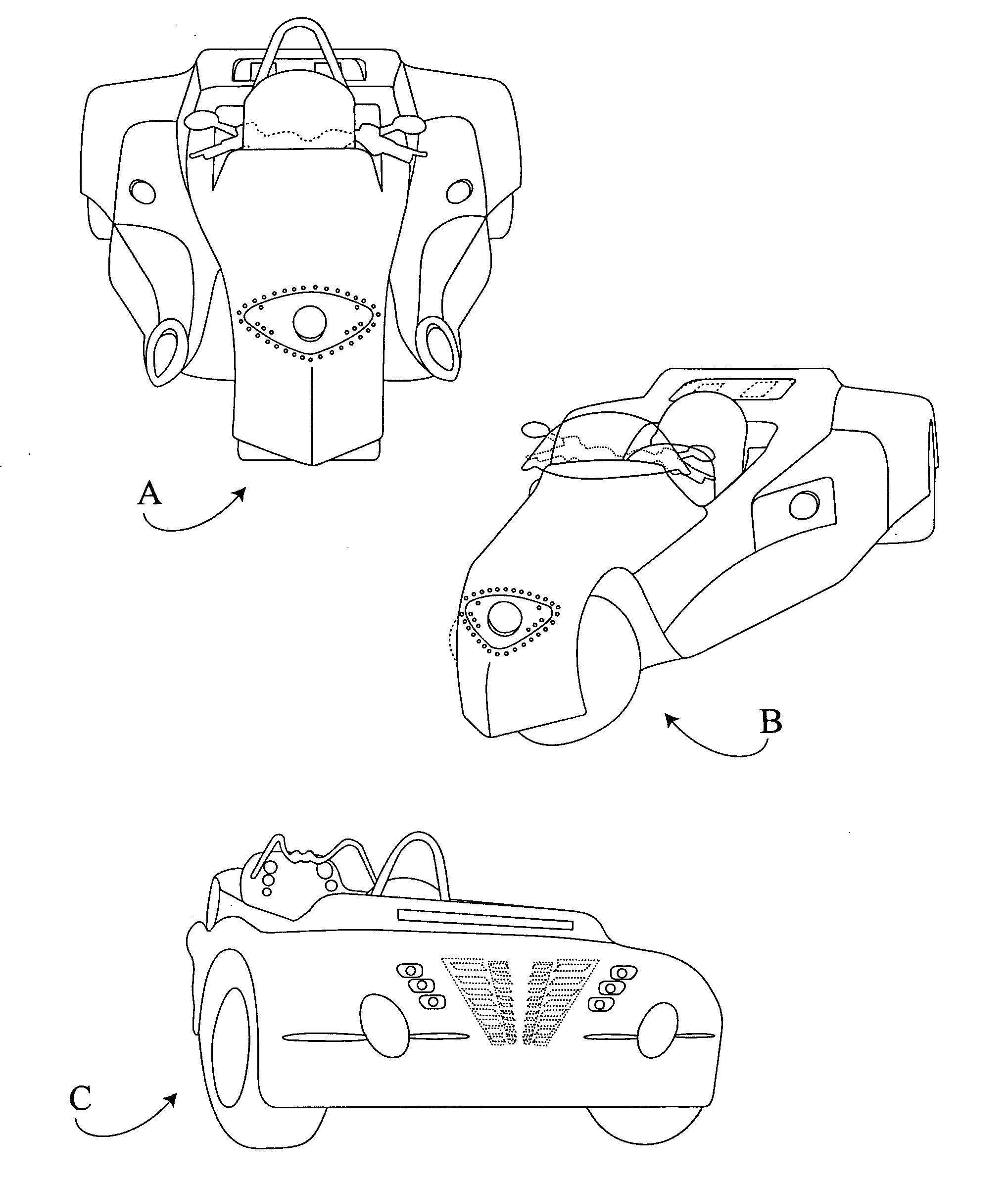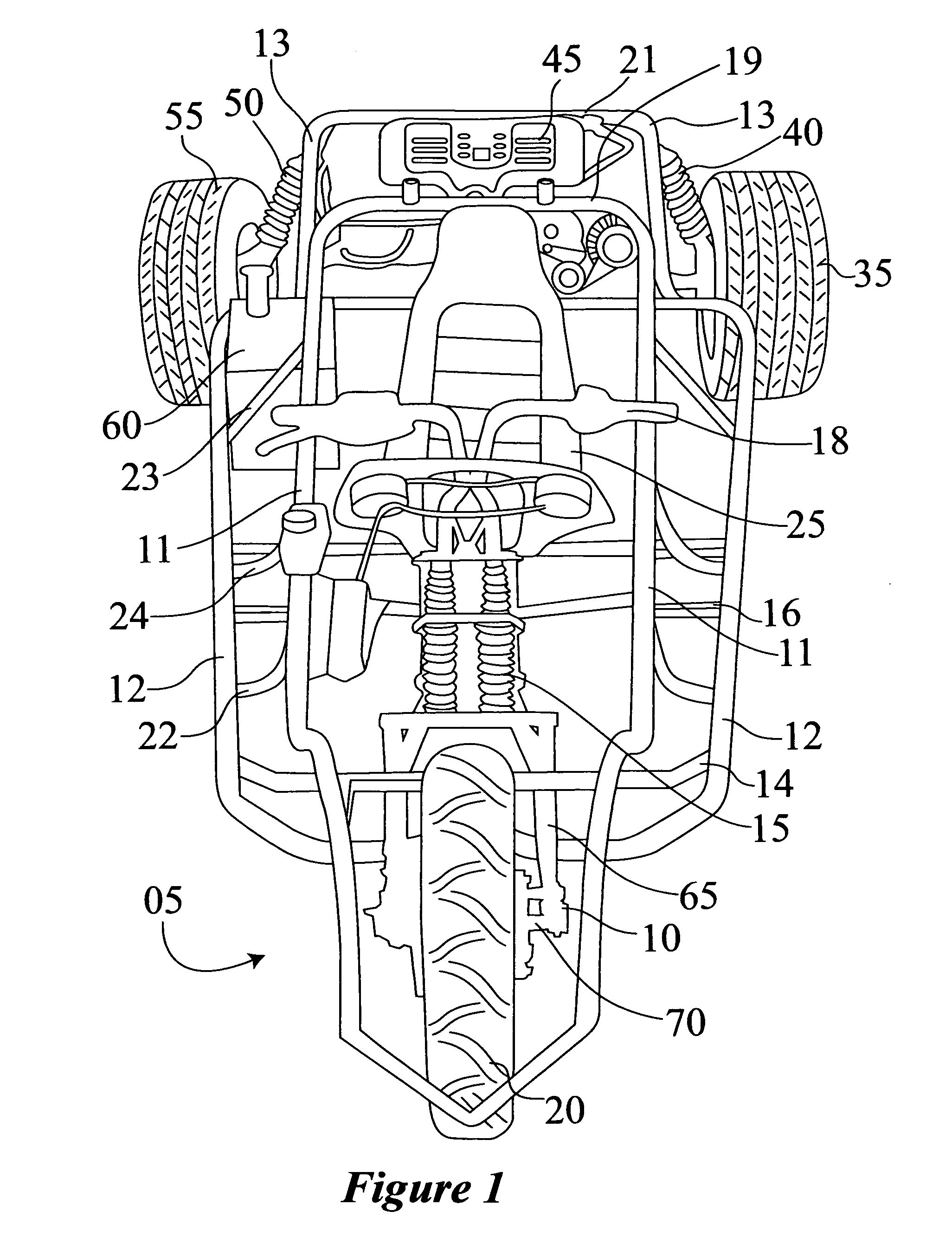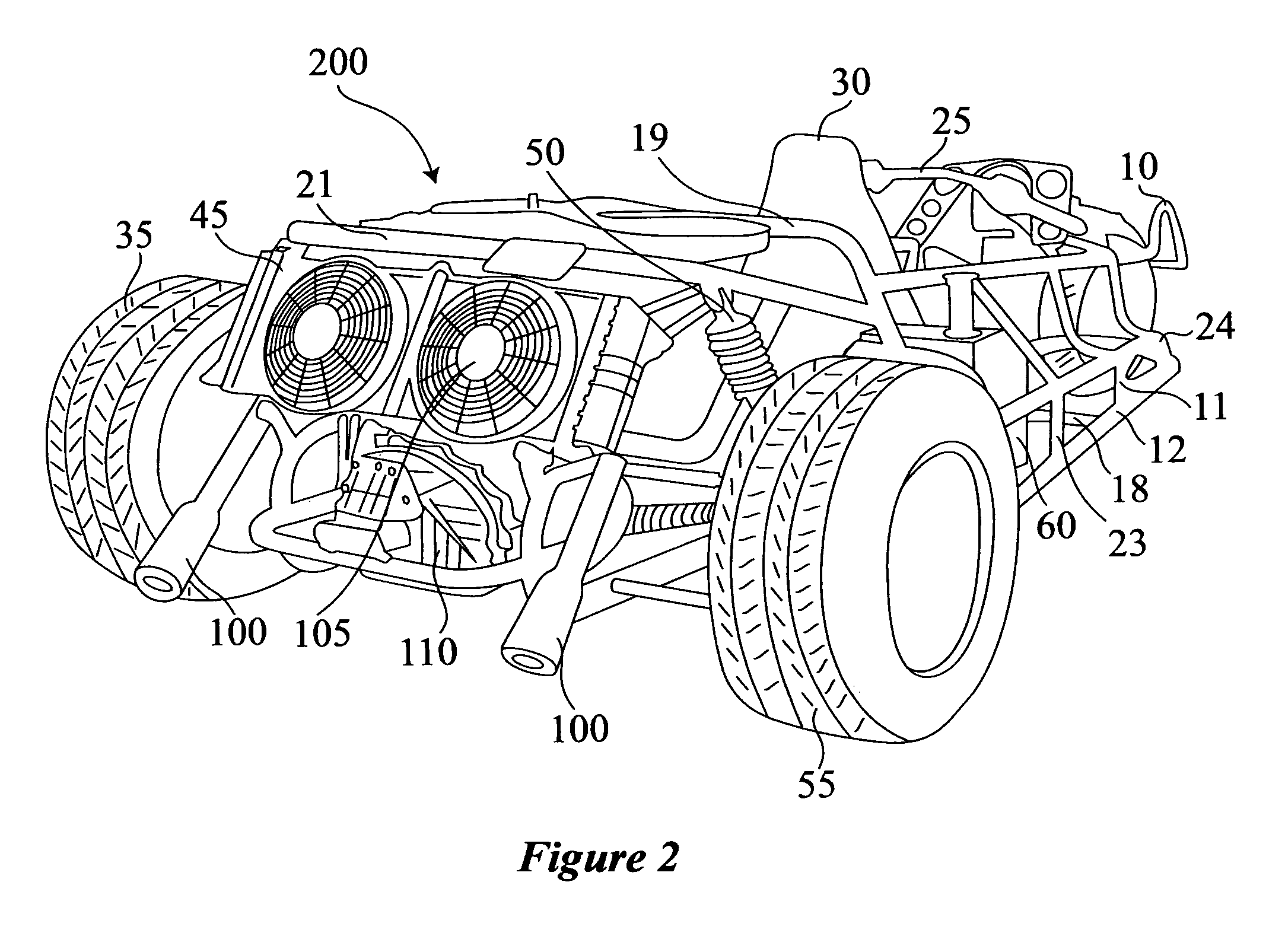Three-wheeled motorcycle
a three-wheeled motorcycle technology, applied in the direction of vehicle components, pedestrian/occupant safety arrangements, understructures, etc., can solve the problems of trikes, in general, dangerous even to the most experienced drivers, flipping or turning, etc., to reduce the risk of tipping or overturning
- Summary
- Abstract
- Description
- Claims
- Application Information
AI Technical Summary
Benefits of technology
Problems solved by technology
Method used
Image
Examples
Embodiment Construction
[0027]The present invention is directed to a stable, fuel-efficient three-wheeled motorcycle having a very low center of gravity, a sturdy frame, ample storage room, and excellent maneuverability.
[0028]The wheeled motorcycle of the present invention contains a metal frame that fully encases the driver and one passenger depending on the model that is being discussed. The tubular frame can be made from an extremely strong steel frame, namely 3140-chrome molly carbon steel. Although expensive, this steel has the tensile strength of about 90,000 pounds per square inch. This type of steel is used in high-speed racecars and is known for its strength and lightweight. Although this is the preferred type of material to be used other types of steel, metals, alloys, composite materials, man-made materials and combinations thereof can also be used.
[0029]The frame can be made from a single cast / mold or can be made out of separate pieces that are welded together. Should the frame be welded togeth...
PUM
 Login to View More
Login to View More Abstract
Description
Claims
Application Information
 Login to View More
Login to View More - R&D
- Intellectual Property
- Life Sciences
- Materials
- Tech Scout
- Unparalleled Data Quality
- Higher Quality Content
- 60% Fewer Hallucinations
Browse by: Latest US Patents, China's latest patents, Technical Efficacy Thesaurus, Application Domain, Technology Topic, Popular Technical Reports.
© 2025 PatSnap. All rights reserved.Legal|Privacy policy|Modern Slavery Act Transparency Statement|Sitemap|About US| Contact US: help@patsnap.com



